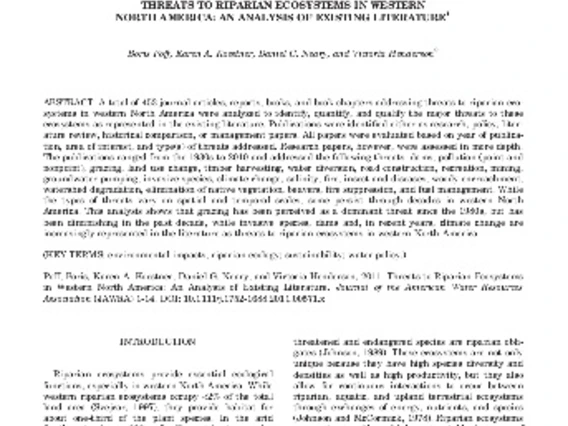
Threats to Riparian Ecosystems in Western North America: An Analysis of Existing Literature
Keywords: riparian ecosystems, threats, dams, pollution, grazing, land use change, timber harvesting, water diversion, road construction, recreation, mining,…